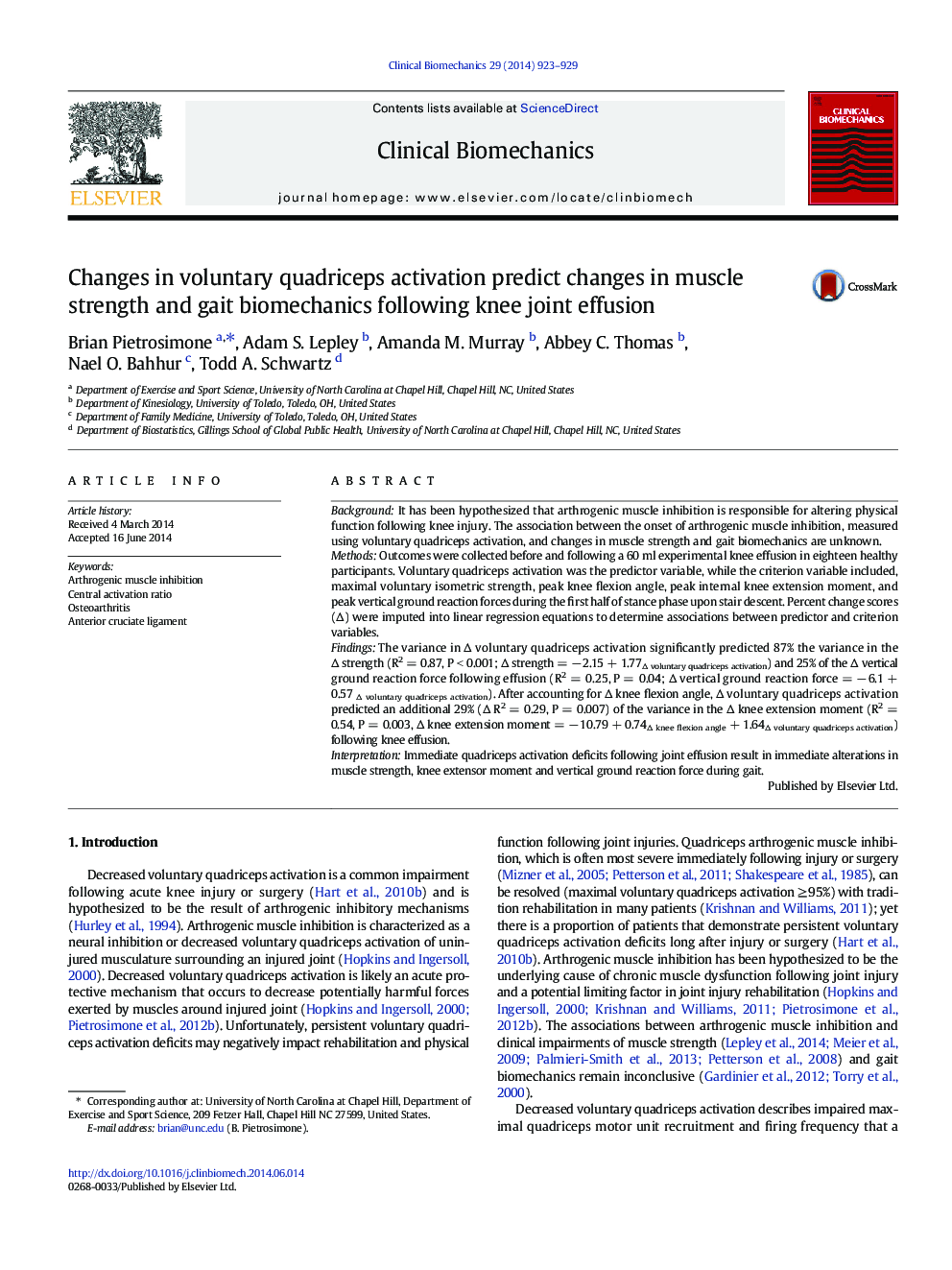| کد مقاله | کد نشریه | سال انتشار | مقاله انگلیسی | نسخه تمام متن |
|---|---|---|---|---|
| 4050374 | 1264924 | 2014 | 7 صفحه PDF | دانلود رایگان |
• Δ voluntary activation was strongly associated with Δ strength.
• Δ voluntary activation accounted for 25% of the Δ in ground reaction force.
• Voluntary activation predicted knee extension moment after accounting for knee angle.
BackgroundIt has been hypothesized that arthrogenic muscle inhibition is responsible for altering physical function following knee injury. The association between the onset of arthrogenic muscle inhibition, measured using voluntary quadriceps activation, and changes in muscle strength and gait biomechanics are unknown.MethodsOutcomes were collected before and following a 60 ml experimental knee effusion in eighteen healthy participants. Voluntary quadriceps activation was the predictor variable, while the criterion variable included, maximal voluntary isometric strength, peak knee flexion angle, peak internal knee extension moment, and peak vertical ground reaction forces during the first half of stance phase upon stair descent. Percent change scores (Δ) were imputed into linear regression equations to determine associations between predictor and criterion variables.FindingsThe variance in Δ voluntary quadriceps activation significantly predicted 87% the variance in the Δ strength (R2 = 0.87, P < 0.001; Δ strength = − 2.15 + 1.77Δ voluntary quadriceps activation) and 25% of the Δ vertical ground reaction force following effusion (R2 = 0.25, P = 0.04; Δ vertical ground reaction force = − 6.1 + 0.57 Δ voluntary quadriceps activation). After accounting for Δ knee flexion angle, Δ voluntary quadriceps activation predicted an additional 29% (Δ R2 = 0.29, P = 0.007) of the variance in the Δ knee extension moment (R2 = 0.54, P = 0.003, Δ knee extension moment = − 10.79 + 0.74Δ knee flexion angle + 1.64Δ voluntary quadriceps activation) following knee effusion.InterpretationImmediate quadriceps activation deficits following joint effusion result in immediate alterations in muscle strength, knee extensor moment and vertical ground reaction force during gait.
Journal: Clinical Biomechanics - Volume 29, Issue 8, September 2014, Pages 923–929
